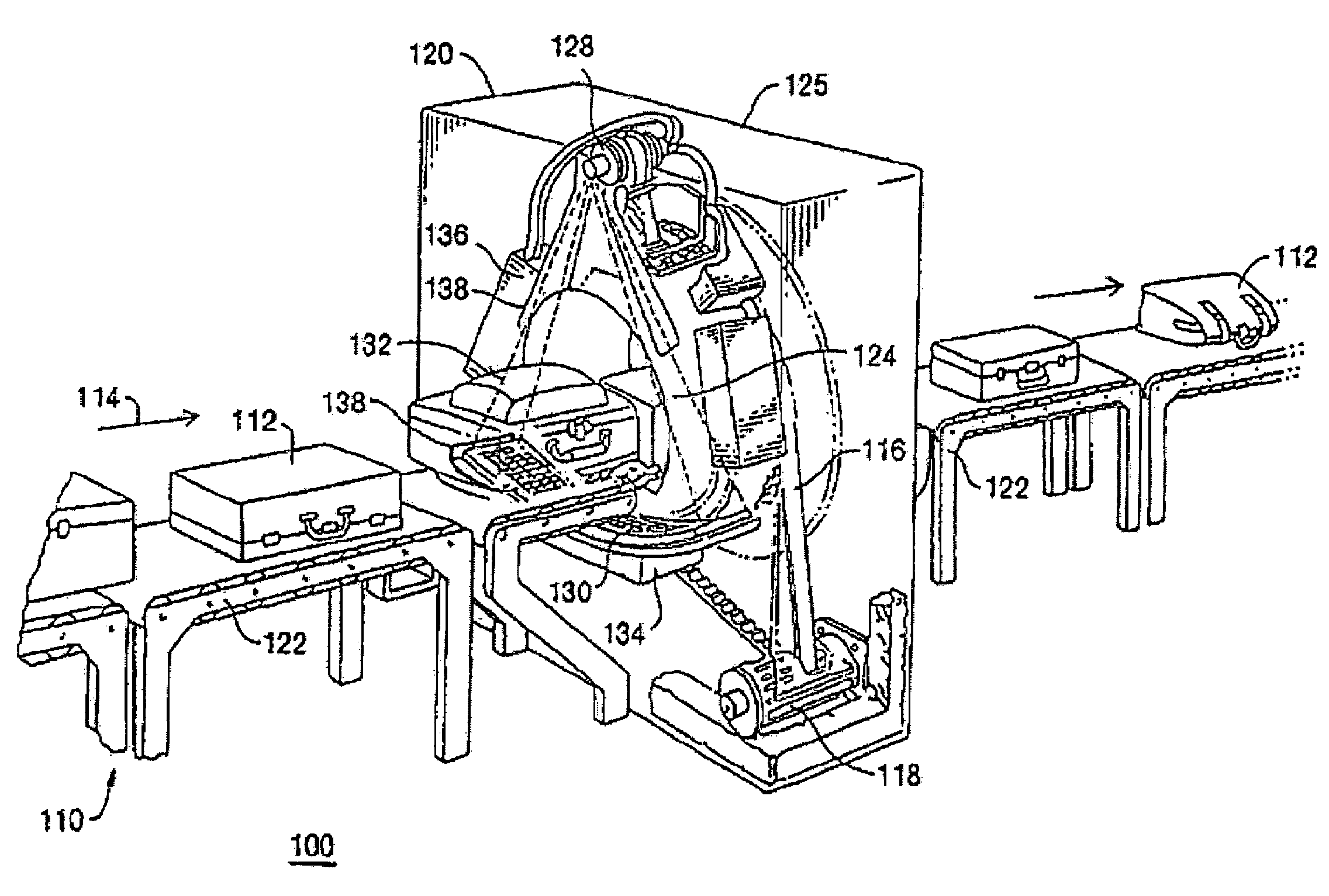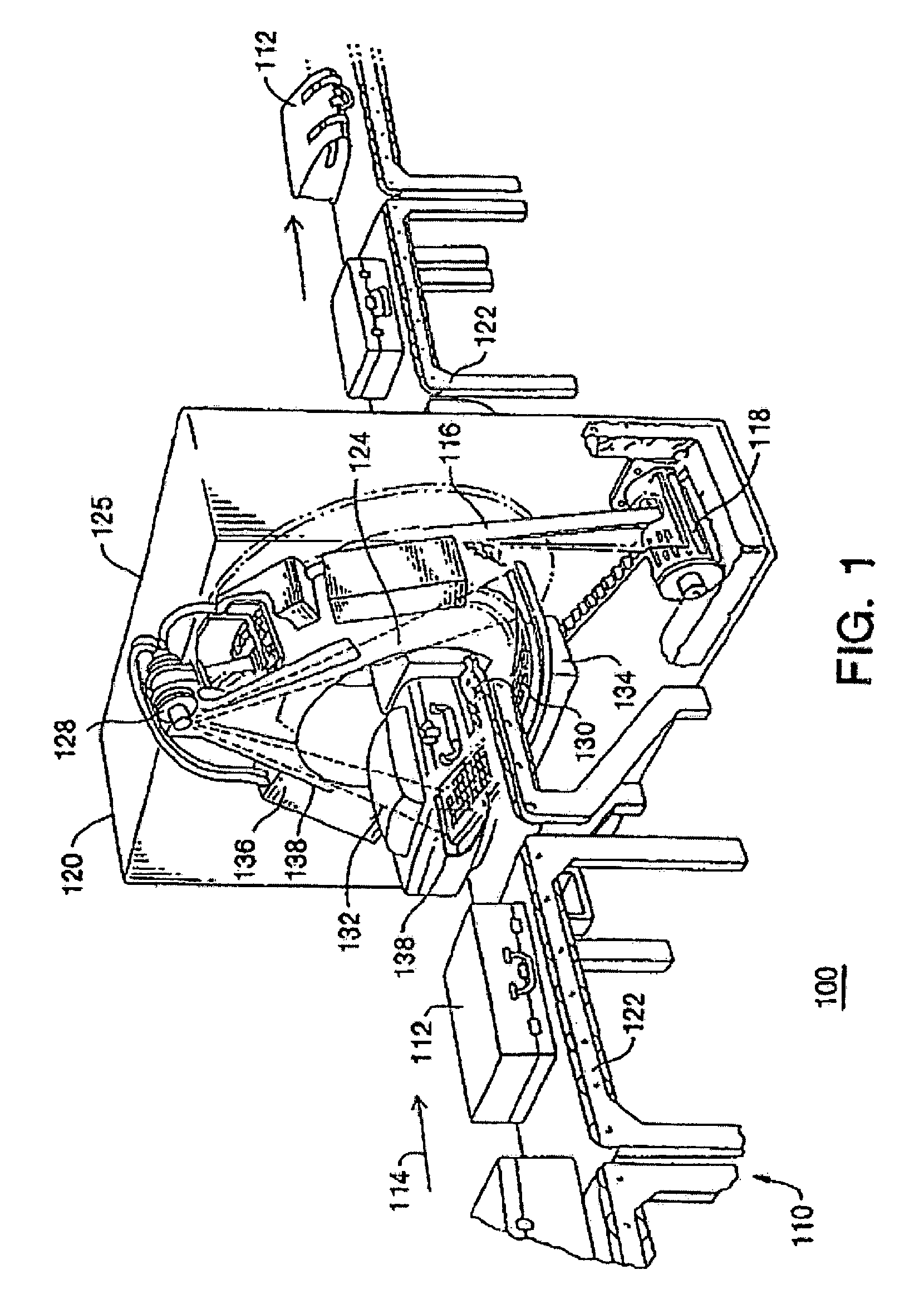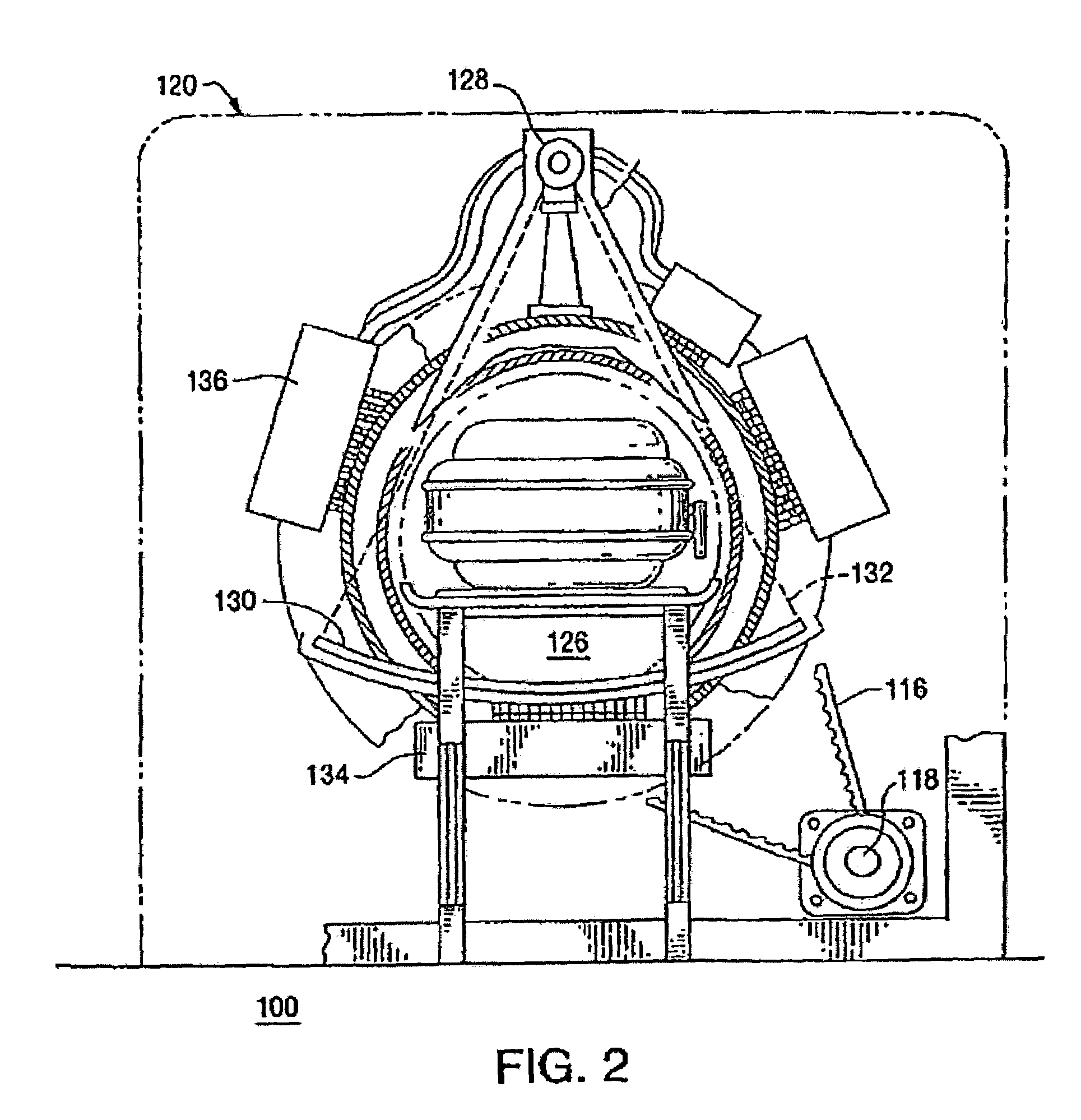Method of and system for classifying objects using histogram segment features of multi-energy computed tomography images
a multi-energy computed tomography and image technology, applied in computing, nuclear radiation detection, instruments, etc., can solve the problems of plastic explosives, baggage scanning systems may be particularly difficult to detect, plastic explosives may be formed into geometric shapes that are difficult to detect,
- Summary
- Abstract
- Description
- Claims
- Application Information
AI Technical Summary
Problems solved by technology
Method used
Image
Examples
Embodiment Construction
[0093]The present disclosure provides a system and a method which detect, identify and / or classify objects in multi-energy CT data including a CT image, which approximates the density measurements of the scanned objects, and a Z (effective atomic number) image, which approximates the atomic number measurements of scanned objects. The disclosure can therefore be implemented in a CT baggage scanning system. The objects identified by the disclosure can be objects known to pose threats to persons at an airport or on board an aircraft. These objects can include explosive objects and materials.
[0094]The generation of the CT image and Z image data from a dual energy CT scanner is preferably performed using methods described in the assignee's “Method of and System for Adaptive Scatter Correction in Multi-Energy Computed Tomography” by Zhengrong Ying, et al. U.S. application Ser. No. 10,853,942, filed on May 26, 2004; incorporated herein by reference; “Method of and System for Destreaking th...
PUM
 Login to View More
Login to View More Abstract
Description
Claims
Application Information
 Login to View More
Login to View More - R&D
- Intellectual Property
- Life Sciences
- Materials
- Tech Scout
- Unparalleled Data Quality
- Higher Quality Content
- 60% Fewer Hallucinations
Browse by: Latest US Patents, China's latest patents, Technical Efficacy Thesaurus, Application Domain, Technology Topic, Popular Technical Reports.
© 2025 PatSnap. All rights reserved.Legal|Privacy policy|Modern Slavery Act Transparency Statement|Sitemap|About US| Contact US: help@patsnap.com



